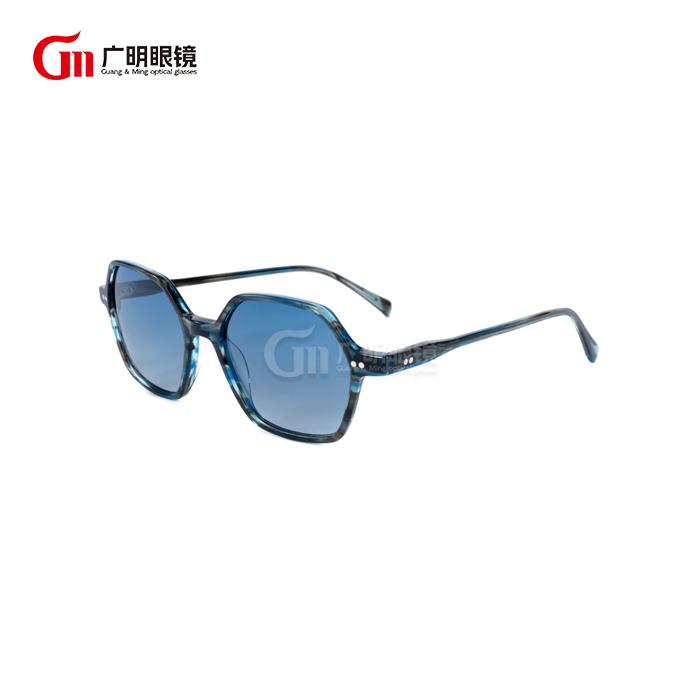How Can I Tell if Sunglasses are Vintage?
Finding authentic vintage sunglasses can be an exciting treasure hunt for fashion enthusiasts and collectors. Whether browsing through thrift stores, estate sales, or online marketplaces, determining if sunglasses are genuinely vintage requires some detective work. Vintage sunglasses, particularly those with square frames, possess distinctive characteristics that set them apart from modern reproductions. This guide will help you identify the telltale signs of authentic vintage eyewear, focusing on the popular square frame styles that have influenced fashion throughout the decades.
How can you identify authentic vintage square sunglasses?
Manufacturing Marks and Brand Signatures
When examining potential vintage sunglasses square frames, check for manufacturing marks and brand signatures. Authentic vintage pieces often carry distinctive hallmarks from specific eras. Look for engraved logos or text on the temple arms, which typically include the brand name, country of origin, and sometimes a patent number. For vintage square sunglasses, brands like Ray-Ban, Persol, and American Optical used consistent marking patterns that evolved over time. Early Ray-Ban square frames from the 1950s and 1960s often feature the Bausch & Lomb signature. The placement and style of these engravings can indicate authenticity and age. Also examine the hinges and temple connections, as vintage sunglasses square styles typically feature more substantial hardware than modern counterparts, often with intricate detailing reflecting their era's craftsmanship.
Materials and Construction Quality
Vintage sunglasses square frames typically use materials that differ from modern production. Prior to the 1980s, many premium vintage sunglasses were crafted from high-quality acetate, genuine tortoiseshell, or early plastics like celluloid rather than lightweight polycarbonates common today. Vintage sunglasses square models are often noticeably heavier than modern equivalents. Examine the frame's construction, looking for hand-finished details and subtle variations indicating handcrafting rather than mass production. Vintage acetate often develops a distinctive patina over time that cannot be replicated. Glass lenses, rather than plastic, were standard in premium vintage sunglasses square designs, offering superior optical clarity. These glass lenses were often mineral glass with distinctive tinting that created colors difficult to reproduce with modern methods. Feel the edge of suspected vintage frames for the smoothness that comes from decades of gentle wear.
Style Elements and Design Characteristics
The design of vintage sunglasses square frames follows distinctive period trends that help determine their age. The 1950s featured bold, angular square frames with pronounced browlines and thick temple arms. By the 1960s, vintage sunglasses square styles incorporated more geometric precision with larger, statement-oriented frames. The 1970s brought oversized square frames with gradient lenses and decorative elements. Look for distinctive bridge designs, unique corner shapes, and era-specific decorative elements. The proportions also evolved—earlier vintage pieces tend to have smaller eye sizes compared to the oversized trends of the 1970s and 1980s. Color palettes provide additional clues, as certain hues were popular in specific decades. Amber, olive green, and crystal clear frames dominated the 1950s and early 1960s, while the late 1960s and 1970s introduced bolder colors for vintage sunglasses square styles.
What are the most valuable vintage square sunglasses to collect?
Iconic Designer Brands and Their Signatures
The most coveted vintage sunglasses square models typically come from renowned designer brands with established eyewear heritage. Ray-Ban's Wayfarer and Clubmaster square variants, introduced in the 1950s and 1960s, remain highly sought after, especially those with original Bausch & Lomb markings. Persol's 649 and 714 models, famously worn by Steve McQueen, feature distinctive details like the Supreme Arrow and Meflecto system. Vintage Carrera sunglasses square styles from the 1970s and 1980s, particularly their oversized sports models with interchangeable lenses, have surged in value. Other prestigious brands include Oliver Peoples' vintage square frames and Cutler and Gross handmade frames from London. When assessing value, examine these vintage sunglasses square models for their original hardware, distinctive hinges, and authentic lens treatments. Original cases and documentation can significantly increase collectible value. Limited production runs and signature colorways can make certain vintage sunglasses square models particularly valuable.

Film and Celebrity Associations
Vintage sunglasses square frames with documented appearances in classic films or worn by iconic celebrities command premium prices. The value of vintage sunglasses square styles increases dramatically when associated with cultural touchstones or influential personalities. The square-framed Oliver Goldsmith sunglasses worn by Audrey Hepburn in "Breakfast at Tiffany's" have become legendary. Similarly, the distinctive square Persol 714 models worn by Steve McQueen in "The Thomas Crown Affair" created an enduring association that drives their collectibility. The square Ray-Ban Wayfarers popularized by the Blues Brothers in the late 1970s sparked renewed interest in the style. Beyond film, vintage sunglasses square styles worn by musicians, artists, and political figures carry provenance that transcends their material value. The most valuable pieces often have multiple layers of significance—design innovation, celebrity association, and historical importance—creating a perfect storm of collectibility.
Condition and Originality Factors
The condition of vintage sunglasses square frames dramatically impacts their value, with mint examples commanding significantly higher prices. Collectors prioritize vintage sunglasses square models that retain all original components, including lenses, nose pads, temple tips, and hardware. Signs of restoration or replacement parts can substantially decrease value. While some wear consistent with age may be acceptable, structural issues like warped frames or significant scratches make even rare vintage sunglasses square styles less desirable. Original packaging, cases, and documentation enhance collectibility, with complete sets sometimes doubling in value. The originality of lens tinting and coatings is particularly important, as many historic brands used proprietary lens technologies that cannot be replicated. When evaluating vintage sunglasses square designs, examine them under natural light to assess the lenses' condition, looking for delamination or coating deterioration. The most valuable vintage sunglasses square specimens maintain their original patina while avoiding significant deterioration.
How can you date vintage square sunglasses accurately?
Decoding Serial Numbers and Markings
Serial numbers and manufacturer markings provide concrete evidence for dating vintage sunglasses square styles with precision. These identifiers evolved as production methods changed and companies reorganized. For Ray-Ban vintage sunglasses square frames, the transition from Bausch & Lomb to Luxottica ownership in 1999 created a clear demarcation in marking styles. Early Bausch & Lomb-produced square Ray-Bans feature "B&L" stamps along with model numbers etched on the temple arm. For European luxury brands like Persol and Carrera, changes in country-of-origin stamps reflect shifts in production locations throughout the decades. "Made in France" or "Made in Italy" markings appear in different positions and fonts depending on the era. Additionally, patent numbers can be cross-referenced with databases to establish precise dating for vintage sunglasses square frames. Some manufacturers included date codes within their serial numbers—these might appear as two-digit year designations or more cryptic numbering systems. Researching brand-specific marking conventions through collector resources can help decipher these codes.
Hardware Evolution and Hinge Technologies
The hardware components of vintage sunglasses square frames evolved significantly throughout the 20th century, providing reliable dating indicators. Early post-war sunglasses from the late 1940s and 1950s typically featured simpler hinge mechanisms with visible rivets or pins securing the temple arms. By the 1960s, manufacturers of premium vintage sunglasses square models began introducing more sophisticated flex hinges and spring-loaded mechanisms. The size, shape, and material of nose pads also changed over time—early vintage square frames often utilized simple integrated bridge designs, while later models incorporated adjustable pads. Examining the screws used in vintage sunglasses square styles can reveal valuable dating information. Earlier pieces typically used slotted flat-head screws, while Phillips head screws became more common later. Specialized hinge designs often serve as signature elements for specific brands and time periods. Persol's patented Meflecto system appeared in their vintage sunglasses square frames starting in the 1930s but evolved in subtle ways over subsequent decades. Similarly, the distinctive five-barrel hinges used in high-end French and Italian vintage square frames from the 1960s and 1970s represent a specific manufacturing approach.
Frame Material and Manufacturing Techniques
The composition and manufacturing methods of frame materials underwent significant evolution, offering reliable dating indicators for vintage sunglasses square styles. Before the 1940s, frames were predominantly made from metal or early plastics like celluloid. The mid-century period saw the rise of acetate frames for vintage sunglasses square designs, with distinctive manufacturing characteristics. Early acetate frames were often thicker and showed more hand-finishing than modern counterparts. The lamination techniques used in vintage sunglasses square frames can also provide dating clues. By the 1970s, injection molding techniques became more common, resulting in lighter-weight frames with more uniform thickness. The color formulations and patterns in vintage sunglasses square frames reflect specific period aesthetics. Early tortoiseshell patterns feature more subtle variations and natural-looking color distributions, while later reproductions show more standardized patterning. The weight distribution of frames shifted over time—earlier vintage square models typically feel more substantial compared to later mass-produced versions. For plastic frames, the development of optically correct curved lenses required advancements in frame design, with earlier vintage sunglasses square styles featuring flatter fronts compared to the more wrapped designs that became feasible later.
Conclusion
Identifying authentic vintage square sunglasses requires attention to manufacturing marks, materials, design elements, and historical context. Whether you're drawn to iconic designer brands, celebrity-associated models, or perfectly preserved rarities, understanding these distinctive characteristics helps ensure your vintage collection is both authentic and valuable. Remember that the most prized vintage square sunglasses combine historical significance with excellent condition and original components.
Wenzhou GuangMing Glasses Co., Ltd. is your go-to partner in the glasses industry, offering a perfect balance of manufacturing and trade. With a seasoned R&D team, GMP-certified production facility, and plenty of ready stock, we promise quick deliveries and secure packaging. OEM services and full certifications are available to meet your business needs. For inquiries, email betty@gmglasses.com.
References
1. Murray, R. & Dearlove, D. (2023). Vintage Eyewear: A Collector's Guide to Twentieth Century Spectacles. Thames & Hudson.
2. Johnson, A.P. (2022). The Cultural History of Sunglasses: From Sun Protection to Fashion Statement. Oxford University Press.
3. Thompson, S.L. (2021). Identifying Authentic Vintage Accessories: A Comprehensive Guide for Collectors and Enthusiasts. Harper Collins.
4. Bernstein, F.A. (2023). "The Square Frame Revolution: How Geometric Designs Transformed Modern Eyewear." Journal of Fashion History, 42(3), 78-95.
5. Ling, P. & Gonzalez, M. (2022). Manufacturing Techniques in Luxury Eyewear: Evolution from Handcraft to Mass Production. Materials and Design Press.
6. Wexler, S. (2024). Hollywood Vision: Iconic Sunglasses in American Cinema. University of California Press.



